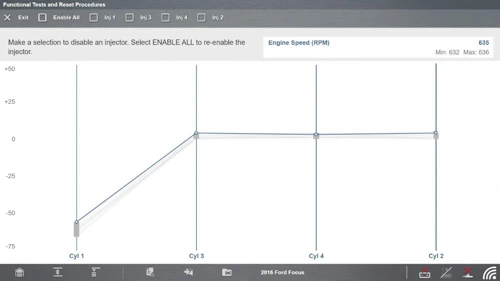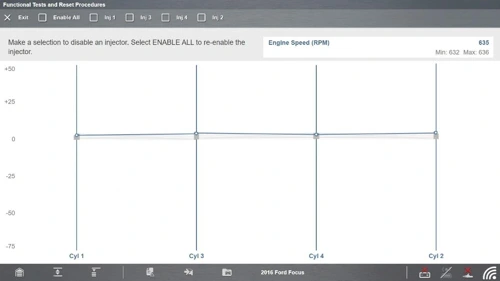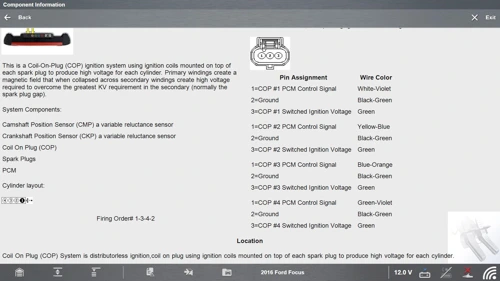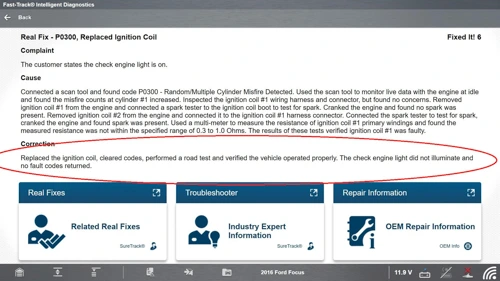Your First Cylinder Power Balance Test
What Is A Cylinder Power Balance Test?
What Could Cause Power Loss In A Cylinder?
What Are Some Of The Symptoms That Would Warrant A Cylinder Power Balance Test?
Ford Power Balance Case Study Analysis
Do you remember the first cylinder power balance test you did? The answer to that could be very different depending on what era of the automotive repair industry you “grew up” in.
Internal combustion engines started being patented around the 1790’s. The first commercially successful internal combustion engine debuted in 1860. The 2-cylinder was developed in 1895 and the 4-cylinder later in 1898.
I imagine that the very first power balance test was performed on the world’s first vehicle equipped with a 4-cylinder engine, the German produced, 1898 Daimler Phoenix.





So, back to the question - Do you remember the very first power balance test you did? I do. It was on my very first vehicle. It was a 1951 Chevy pickup with a 216 CID straight 6-cylinder engine that fouled a spark plug or two after every tank of gas.
The truck was several different colors due to a combination of body part replacements from different trucks, various shades of primer, and rust. I named the truck Joseph, “truck” of many colors.
By pulling one spark plug at a time and listening to the change in engine speed, I knew which cylinder was weak and needed to have the spark plug cleaned. This was a whole lot faster process than my only other option: removing all the plugs for a visual inspection.
The power balance test saved me TIME- and lots of it!
As a mechanic in those days I discovered that Snap-on’s spark plug removal tool was a “must have” when HEI (High Energy Ignition) became more prevalent. Those of you of that era may remember that becoming the path of least resistance with those systems could be a hair curling experience.

Let’s fast forward to today. Everything is fuel injected today, isn’t it? So killing the spark to a cylinder while having fuel still pouring in would be unsafe. Not to mention the posibility of causing serious engine damage.
Disconnecting the fuel injector connector might be an option, but how time consuming would that be? It may even be impossible, right?
Let’s back up a minute.
The cylinder power balance test is a way of measuring the power contribution of each cylinder. That contribution should be relatively equal across all cylinders. The test, as we have already discussed, is disabling the operation of each cylinder, one at a time, while measuring the drop in RPMs.
What Could Cause Power Loss In A Cylinder?
A cylinder may not be contributing because of an ignition issue, a fuel delivery problem, an air delivery problem, or a mechanical failure such as a burnt valve or worn piston rings. There may be more than one cylinder involved. A blown head gasket, a cracked head, or a cracked block results in a problem with adjacent cylinders.
What Are Some Of The Symptoms That Would Warrant A Cylinder Power Balance Test?
• Check engine light on with a misfire code
• Engine miss at idle or cruise speed
• Engine shudder during acceleration
• Poor fuel economy
• Failed emissions
So, back to the question of disconnecting a fuel injector and looking for engine speed changes. That works, but what kind of time does that take? Can you get to all the injectors without disassembly?
Let us look at a real world scenario, a case study that will guide us to the best course of action.
Make sure to follow the test and safety instructions.


With one click, you disable one cylinder at a time while watching RPM graph. In this example, Cylinder 1 is dropping over 50 RPMs when disabled. All cylinders should be relatively the same.


Here is the problem cylinder. With the cylinder disabled, there is no change to RPM. We have narrowed it down to cylinder #2.


After a new set of plugs and the same Power balance test result, we need to test the coil. Go to 'Guided Component Test Meter' to learn how.



Once again, Fast-Track Intelligent Diagnostics only shows the test relevant to the P0300 code. We need ignition tests.


The “Guided” in Guided Component Test means on the job training allowing you to earn while you learn. It is always a good idea to start with the training found in 'Component Information'.


Component Information teaches how to hook the test leads up to the diagnostic tool as well as pin assignment and wire color for each test point. It also reviews the basics of the system and how it works.
When we are all trained up, we can back out of component information.


KOEC (key on engine crank) would be an ideal test for a no start situation. This vehicle runs so we need to look a components signature.

Note that this is checking the pulse sent from the control module. If no switching pulse is present the instructions states to suspect PCM or wiring. With a switching pulse we need to test the coil itself.



There are many ways to test a coil. Some diagnostic tools, like the ZEUS, could do a secondary Ignition test to verify. A resistance test as shown below is also a valid procedure. This “real fix” is a contribution from a technician.



Replaced coil. Problem solved. So all that is left is to perform a 'Post-Scan' to verify the repair. The special Ford Power Balance Test certainly pointed directly to the problem cylinder. After that, it is just a few more tests to pinpoint the problem. It always pays more to test, not guess.
Post-scan shows all systems good. Job complete.



Take a look at our leading range of Car Scan Tools
Missed our previous Technical Focus article? Take a look! DPF Regeneration: Passive, Active, & Manual Regeneration